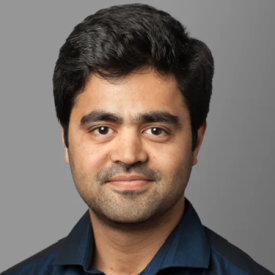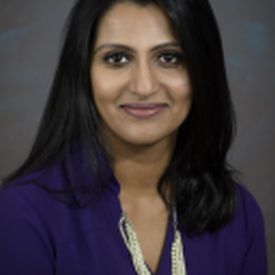Enhancing secondary school learning: Role of remedial camps and teacher flexibility
A key dilemma in Indian education is that while children are enrolled in school, they are not actually learning. Based on an experiment in Odisha, this article explores possible solutions to the learn...
-
 Sabrin Beg
Sabrin Beg  Anne Fitzpatrick
Anne Fitzpatrick  Jason Kerwin
Jason Kerwin  Adrienne Lucas
Adrienne Lucas  Khandker Wahedur Rahman
Khandker Wahedur Rahman  08 April, 2024
08 April, 2024
- Articles
Improving healthcare access to address the rise in non-communicable diseases among Indian women
In light of the changing healthcare burden for women, with a rise in mortality due to non-communicable diseases, Bhan and Shukla outline the incidence of diseases in Indian states over the last two de...
-
 Nandita Bhan
Nandita Bhan  Prajakta Pradip Shukla
Prajakta Pradip Shukla  22 December, 2023
22 December, 2023
- Perspectives
The ‘invisible’ disability of mental illness: Barriers to social security access
Sakshi Sharda writes about the how a lack of clarity on the assessment and diagnosis of mental health and poor implementation of social security schemes increases the vulnerability of those livings wi...
-
 Sakshi Sharda
Sakshi Sharda  10 October, 2023
10 October, 2023
- Perspectives
India's informal doctors: Assets, not crooks
Informal healthcare providers are the most common, and sometimes the only source of healthcare, in much of rural India. In this post, Jishnu Das of the World Bank argues that informal providers should...
-
 Jishnu Das
Jishnu Das  13 June, 2016
13 June, 2016
- Perspectives
What are schools worth?
Since large-scale expansions in education impact both individual behaviours and labour markets, convincing causal estimates of their overall benefits are hard to generate. Analysing the overall econom...
-
 Gaurav Khanna
Gaurav Khanna  01 June, 2016
01 June, 2016
- Articles
Early life nutrition and future educational outcomes: Findings from ICDS
Integrated Child Development Services – India’s flagship child nutrition programme – has recently suffered a major cut in funding. This column shows that supplementary nutrition provided under t...
-
 Ramanan Laxminarayan
Ramanan Laxminarayan  Arindam Nandi
Arindam Nandi  25 April, 2016
25 April, 2016
- Articles
Public health insurance for tertiary diseases: Lessons from Andhra's Aarogyasri programme
Private health insurance covering tertiary diseases is limited to the upper middle class in India. One reason for low take-up of publicly-financed health insurance among economically weaker sections i...
-
 Tarun Jain
Tarun Jain  12 April, 2016
12 April, 2016
- Articles
The less the merrier? Family size and education in India
In the face of financial constraints, children from larger families are expected to have relatively less education and poor health. This column explores the empirical relevance this ‘quantity-qualit...
-
 Adriana Kugler
Adriana Kugler  Santosh Kumar
Santosh Kumar  01 April, 2016
01 April, 2016
- Articles
Social influences and public health insurance utilisation
In developing countries there are often limited formal sources of information about programme benefits or how to access them. Social networks might influence adoption by providing more programme inf...
-
 Tarun Jain
Tarun Jain  31 March, 2016
31 March, 2016
- IGC Research on India
Causes and consequences of low caloric intake in India: Nutrition, productivity, and cognition
Many of the world’s poor consume very few calories. Because calories are not just consumption, but also an input into production, this low consumption may dampen labour productivity and impede decis...
-
 Sendhil Mullainathan
Sendhil Mullainathan  Heather Schofield
Heather Schofield  31 March, 2016
31 March, 2016
- IGC Research on India
Self-reported health data: Issues and solutions
Health data from the National Sample Survey shows an increase in morbidity in India over the years. However, given that the data is self-reported, it is difficult to ascertain whether this indeed refl...
-
 Aparajita Dasgupta
Aparajita Dasgupta  23 March, 2016
23 March, 2016
- Articles
Improving maternal and child health through conditional cash transfers
Cash transfers to the poor, conditional on use of particular public services, are a popular tool to increase healthcare utilisation. This column evaluates the impact of one such scheme – Janani Sura...
-
 Sisir Debnath
Sisir Debnath  21 March, 2016
21 March, 2016
- Articles
Reservation under RTE: Status of implementation and way forward
Section 12(1)(c) of the Right to Education Act, 2009, mandates that non-minority private unaided schools should reserve at least 25% of seats in entry-level grades for children from economically weak...
-
 Ambrish Dongre
Ambrish Dongre  Ankur Sarin
Ankur Sarin  11 January, 2016
11 January, 2016
- Articles
New Education Policy: Addressing institutional concerns
Failure of education policy has been attributed, at least in part, to implementation issues. In this article, Kiran Bhatty, Senior Fellow at the Center for Policy Research, contends that the poor sta...
-
 Kiran Bhatty
Kiran Bhatty  22 December, 2015
22 December, 2015
- Perspectives
Child development: How are Indian states faring?
The recent release of the ‘Rapid Survey On Children’ report presents an opportunity to take a fresh look at the state of Indian children. Based on a simple Child Development Index constructed for...
-
 Jean Drèze
Jean Drèze  Reetika Khera
Reetika Khera  10 December, 2015
10 December, 2015
- Articles
Twitter feed
Tweets by Ideas4IndiaMost Popular Human Development Posts
Hindu-Muslim fertility differentials in India: District-level estimates from Census 2011
The 2011 Indian Census data show a higher growth rate of Muslim population compared to the Hindu population. This article provides an in-depth picture of Hindu-Muslim fertility differentials at the di...
 Saswata Ghosh
Saswata Ghosh  27 March, 2019
27 March, 2019
- Articles
Ten steps to transform the quality of education in India
In this article, Sridhar Rajagopalan, Managing Director of Educational Initiatives, suggests 10 initiatives that can help transform the quality of education in India.
 Sridhar Rajagopalan
Sridhar Rajagopalan  19 November, 2015
19 November, 2015
- Perspectives
Understanding India’s mental health crisis
Since the onset of the Covid-19 pandemic, several reports have indicated a worsening of mental health issues among individuals across age groups. In this post, Michele Mary Bernadine examines the stat...
 Michele Mary Bernadine
Michele Mary Bernadine  06 April, 2021
06 April, 2021
- Perspectives





 20 December, 2023
20 December, 2023






